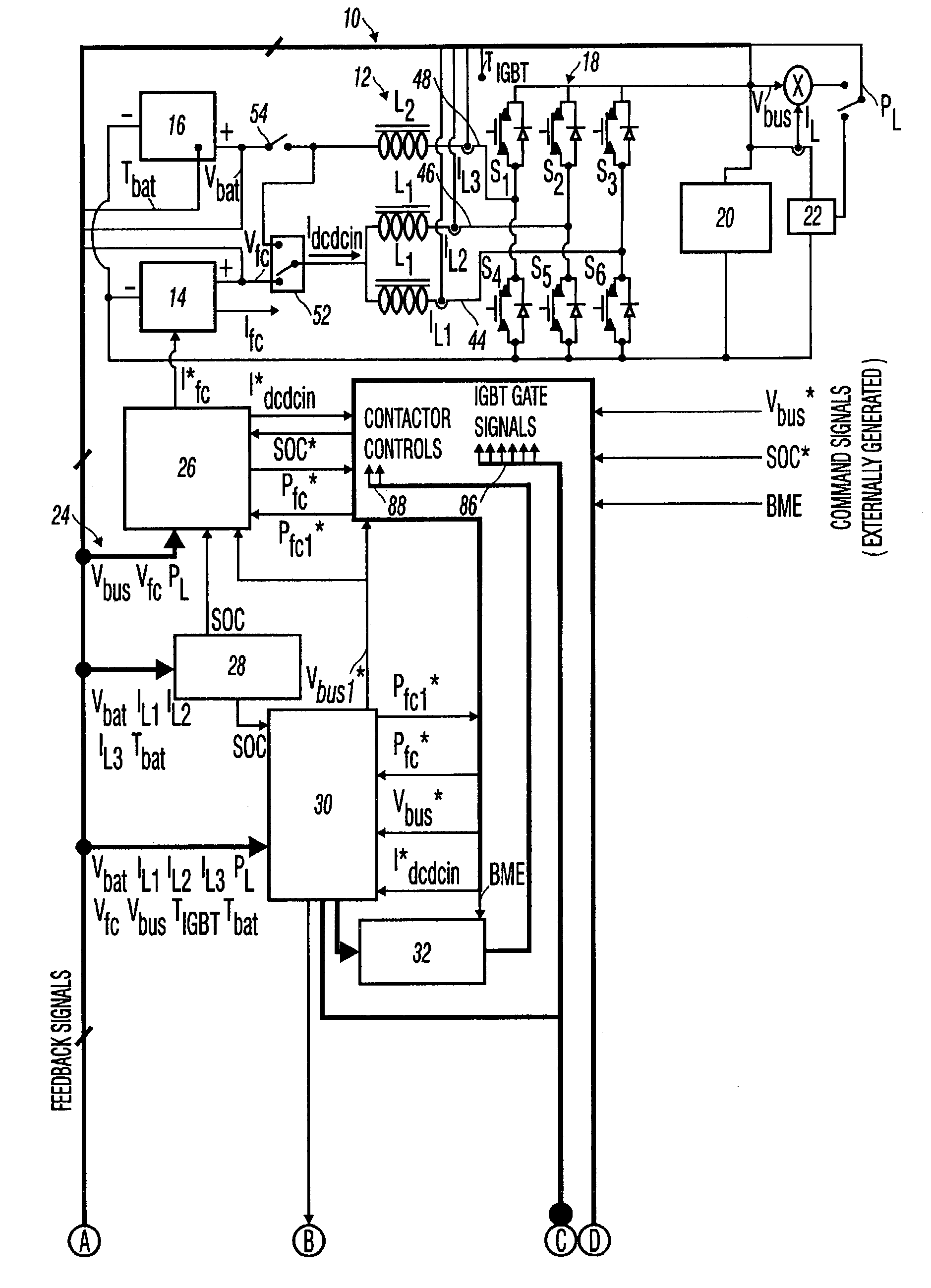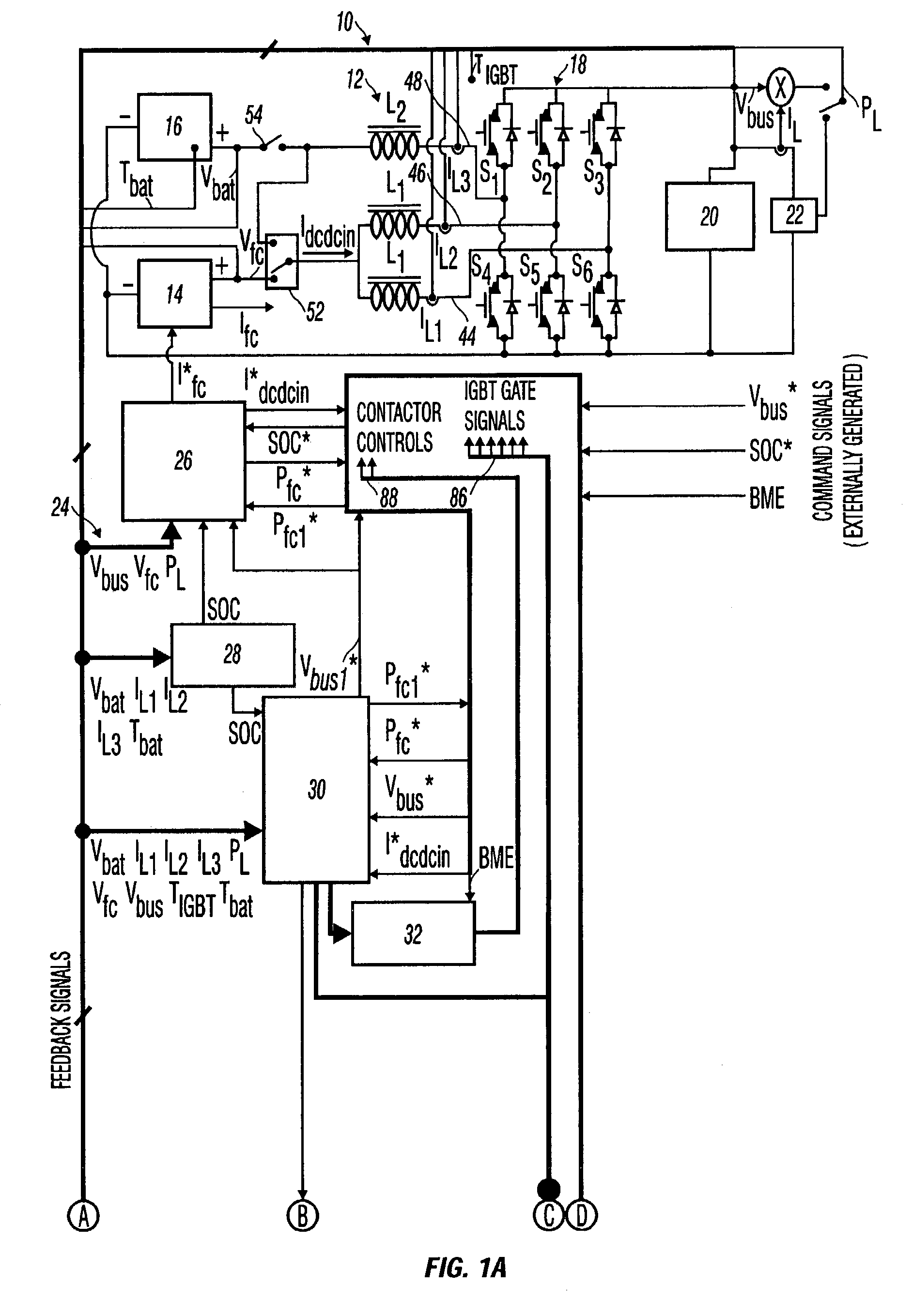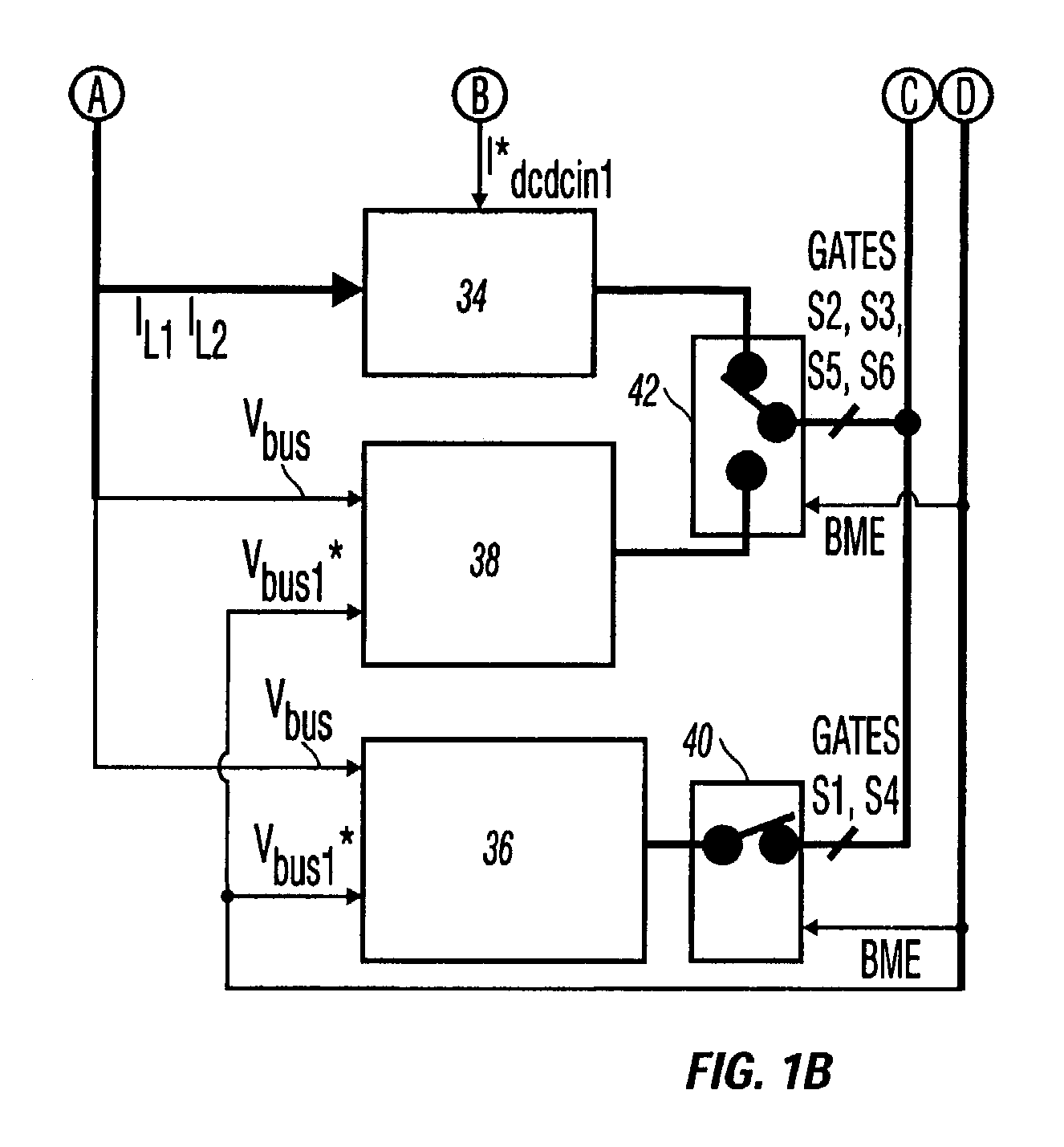Direct current/direct current converter for a fuel cell system
a fuel cell and converter technology, applied in the direction of electrochemical generators, process and machine control, instruments, etc., can solve the problems of fuel cell power outages which are unacceptable, fuel cell is typically not able to respond immediately, and the quality of power or the regulation of the direct current (dc) bus is an issue, so as to reduce the topology of system cost and increase power conversion capability.
- Summary
- Abstract
- Description
- Claims
- Application Information
AI Technical Summary
Benefits of technology
Problems solved by technology
Method used
Image
Examples
Embodiment Construction
[0016]In the following description, certain specific details are set forth in order to provide a through understanding of various embodiments of the invention. However, one skilled in the art will understand that the invention may be practiced without these details. In other instances, well-known structures associated with electrical circuits and circuit elements have not been shown or described in detail to avoid unnecessarily obscuring descriptions of the embodiments of the invention.
[0017]Unless the context requires otherwise, throughout the specification and claims which follow, the word “comprise” and variations thereof, such as, “comprises” and “comprising” are to be construed in an open, inclusive sense, that is as “including, but not limited to.”
[0018]Referring now in detail to an embodiment of the fuel cell systems and control methods, an example of which is illustrated in the accompanying drawings, FIGS. 1A and 1B illustrate a circuit and control scheme for a fuel cell sys...
PUM
| Property | Measurement | Unit |
|---|---|---|
| output voltage | aaaaa | aaaaa |
| DC voltage | aaaaa | aaaaa |
| input current | aaaaa | aaaaa |
Abstract
Description
Claims
Application Information
 Login to View More
Login to View More - R&D
- Intellectual Property
- Life Sciences
- Materials
- Tech Scout
- Unparalleled Data Quality
- Higher Quality Content
- 60% Fewer Hallucinations
Browse by: Latest US Patents, China's latest patents, Technical Efficacy Thesaurus, Application Domain, Technology Topic, Popular Technical Reports.
© 2025 PatSnap. All rights reserved.Legal|Privacy policy|Modern Slavery Act Transparency Statement|Sitemap|About US| Contact US: help@patsnap.com



